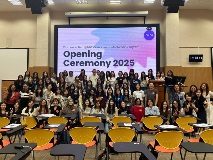
As we enter a transformative era in philanthropy, the integration of technology and innovative funding strategies is reshaping the landscape of philanthropy in Singapore and beyond. The swift advancement of digital tools and a shift towards more empathetic donor relationships are catalysing significant changes in how contributions are solicited, managed and utilised. These developments promise to enhance the effectiveness of collaborative philanthropy—a method where multiple stakeholders, including individual donors, charities, corporations, and government entities, join forces. By working together, these diverse groups can make contributions that not only have a more substantial impact but also align with the evolving needs of communities and organisations worldwide.
1. Electronic Payment Services
The adoption of electronic payment services in philanthropy is transforming the way gifts are managed, making it more convenient for donors to contribute online. This approach to giving harnesses digital technologies, streamlining the giving process. Digital payment gateways and even QR code-assisted transactions have simplified the act of giving, allowing donors to effortlessly support their chosen causes as and when they desire to, without the complexities of an intricate, traditional paper-based payment and approval process.
Moreover, integrating electronic payments into philanthropic efforts aligns with the increasing emphasis on financial inclusion. It provides a means for more people to participate in philanthropy, whether they are making small personal philanthropic gifts or larger institutional contributions. This approach not only expands the reach and impact of charitable giving but also supports broader societal advancement by empowering individuals through enhanced access to financial services.

2. Effective Altruism
Effective altruism revolutionises philanthropy by prioritising evidence and reasoning in deciding how to benefit others most effectively. Instead of relying on personal connections or immediate emotional responses, effective altruism uses rigorous, data-driven analysis to maximise impact. By applying the same level of scrutiny as one would in business investments, philanthropy can address the world’s most pressing problems more efficiently, helping donors give back to society in the most impactful way.
Effective altruism uses evidence and analysis to identify the best causes and the most effective ways to support them. This means conducting extensive research to identify underfunded areas with the potential for substantial societal benefits. It shifts the focus from just giving more to giving more effectively, considering not only the scale of an issue but also the tractability and importance of the problem.
Moreover, effective altruism often supports cost-effective interventions that may be overlooked due to lack of visibility or appeal. By prioritising measurable outcomes of philanthropic actions, donors can ensure that their contributions bring about significant, tangible changes.
3. Leveraging Digital Media and Influencer Philanthropy
The landscape of philanthropy is undergoing a dynamic transformation as digital media platforms, influencer involvement and innovative fundraising methods like "charity streams" (i.e. events live streamed over a platform such as YouTube, Facebook, Discord or Twitch where viewers can give to causes highlighted by event hosts) increasingly appeal to younger generations of donors. A recent report highlights a significant shift in how philanthropic causes capture attention and support, particularly among millennials and Gen Z. These "next-gen" donors are reportedly four times more likely than traditional donors to discover charitable causes through influencers or celebrities, underlining the powerful impact of these figures in guiding philanthropic awareness and action.
The effectiveness of these digital-first approaches lies in their ability to create a personal connection between the cause and the donor. Influencers often share their personal reasons for supporting a cause or articulate the impact of their gifts in a relatable manner, making philanthropy accessible and appealing to a digital-savvy audience. This strategy not only helps to educate and inform potential donors about important issues but also fosters a sense of community and collective action among viewers, further amplifying the potential for significant philanthropic impact.
Moreover, leveraging digital media for philanthropy taps into the behavioural trends of younger generations, who prefer engaging with content that is interactive and directly accessible. This preference indicates a broader shift in charitable giving, where transparency, engagement, and immediate results are highly valued. As organisations adapt to these preferences, the integration of digital strategies, including influencer partnerships and live-streaming events, is likely to play an increasingly central role in philanthropy in the upcoming years.
Shaping the Future of Philanthropy
As philanthropy enters a transformative era, innovative methods and technological advancements are reshaping the traditional landscapes of charitable giving. These emerging trends are revolutionising donor engagement, fund management and recipient empowerment, cultivating a more dynamic and effective philanthropic environment. This shift not only maximises the impact of individual contributions but also bolsters the broader mission of advancing societal well-being, ensuring that philanthropy evolves to meet the challenges of an ever-changing world.
To be a part of this transformative journey, we invite you to make a gift to help drive innovation and extend the reach of these crucial philanthropic opportunities. Join us at NUS Giving in shaping a future where every gift makes a lasting difference.






